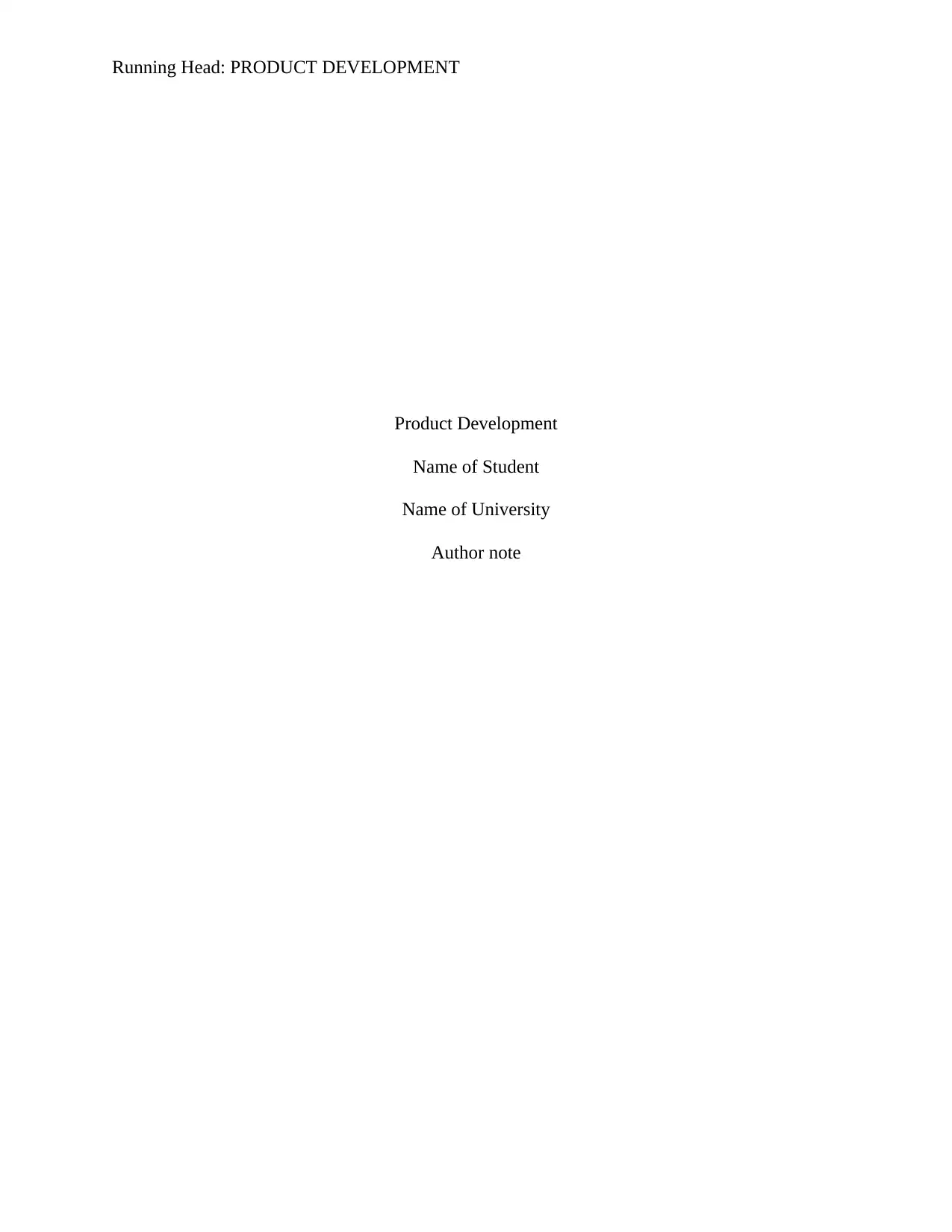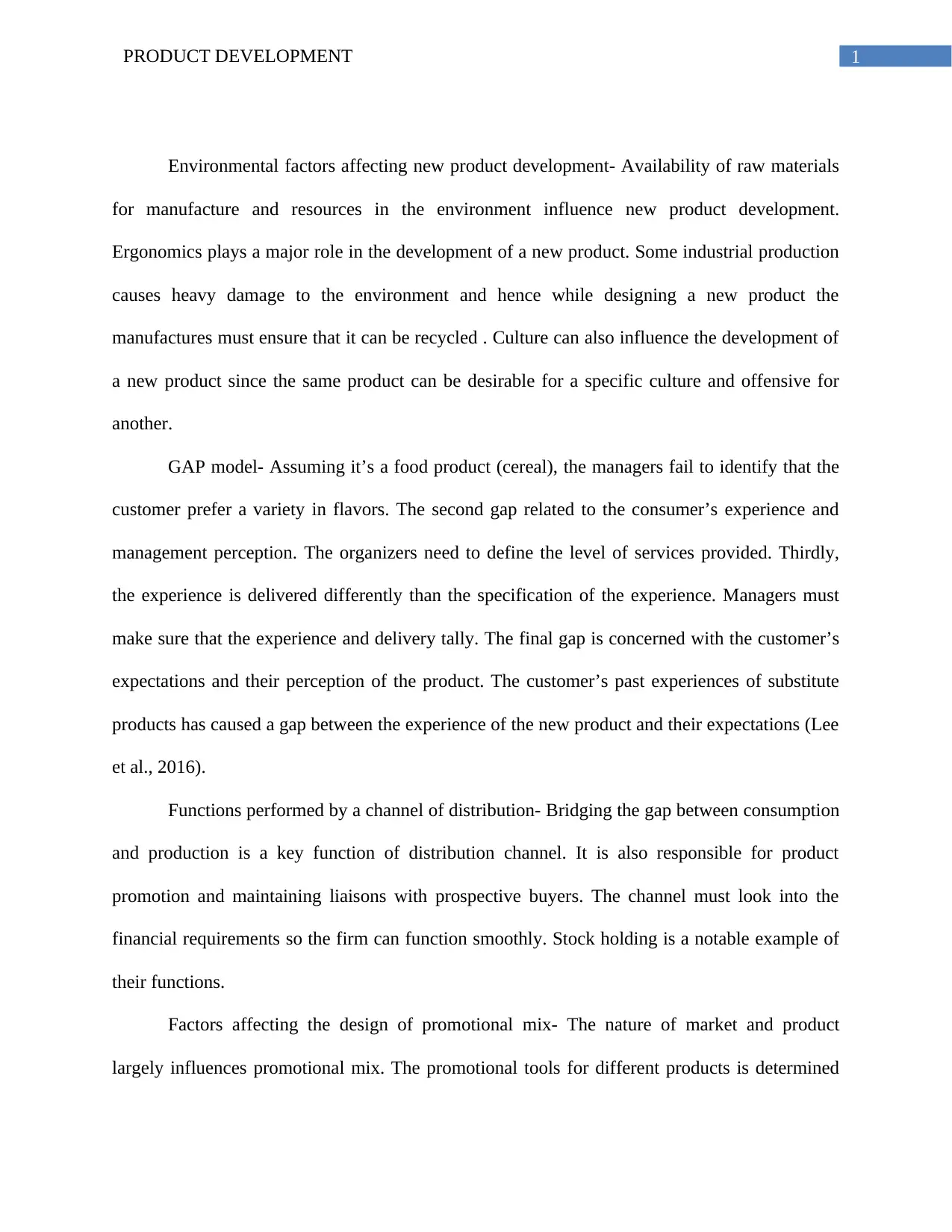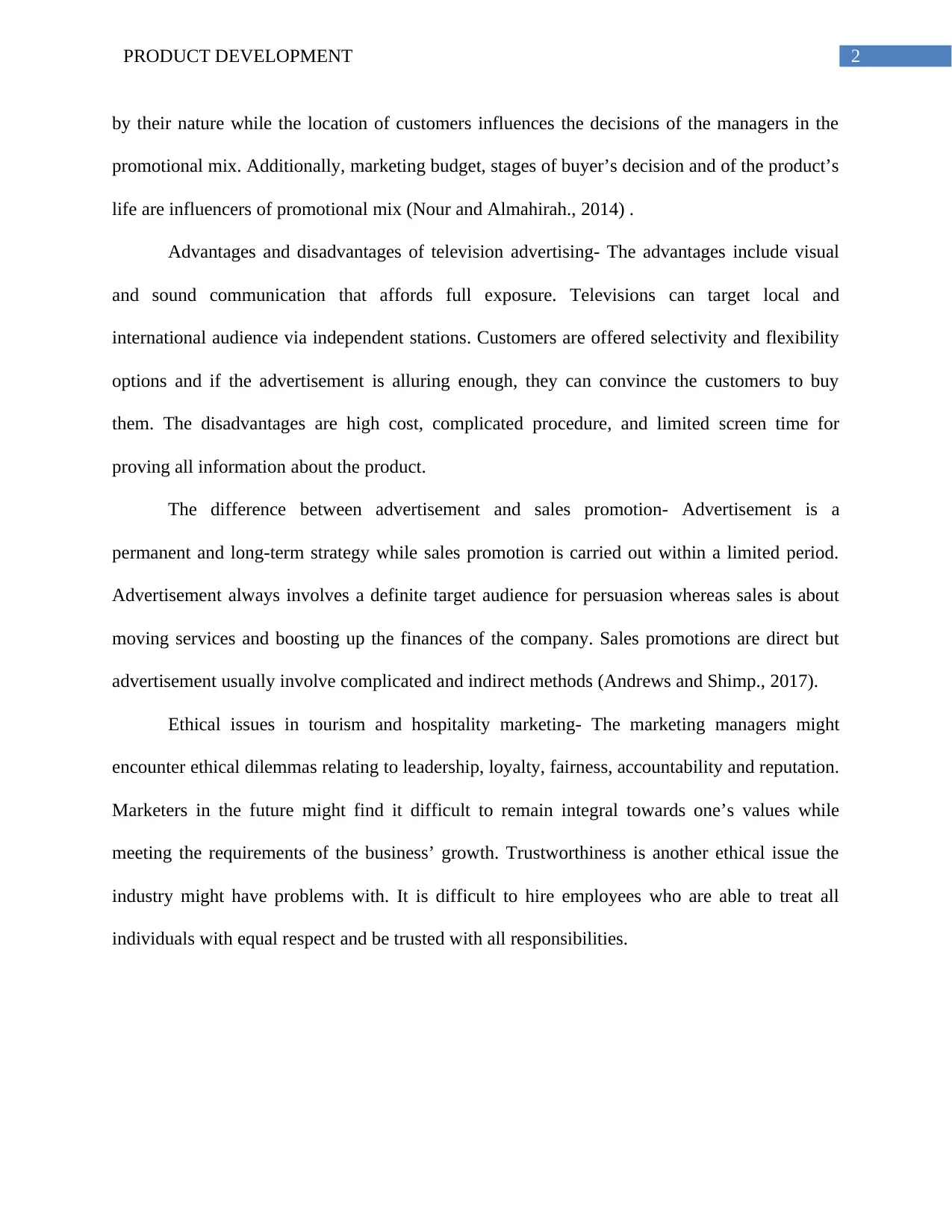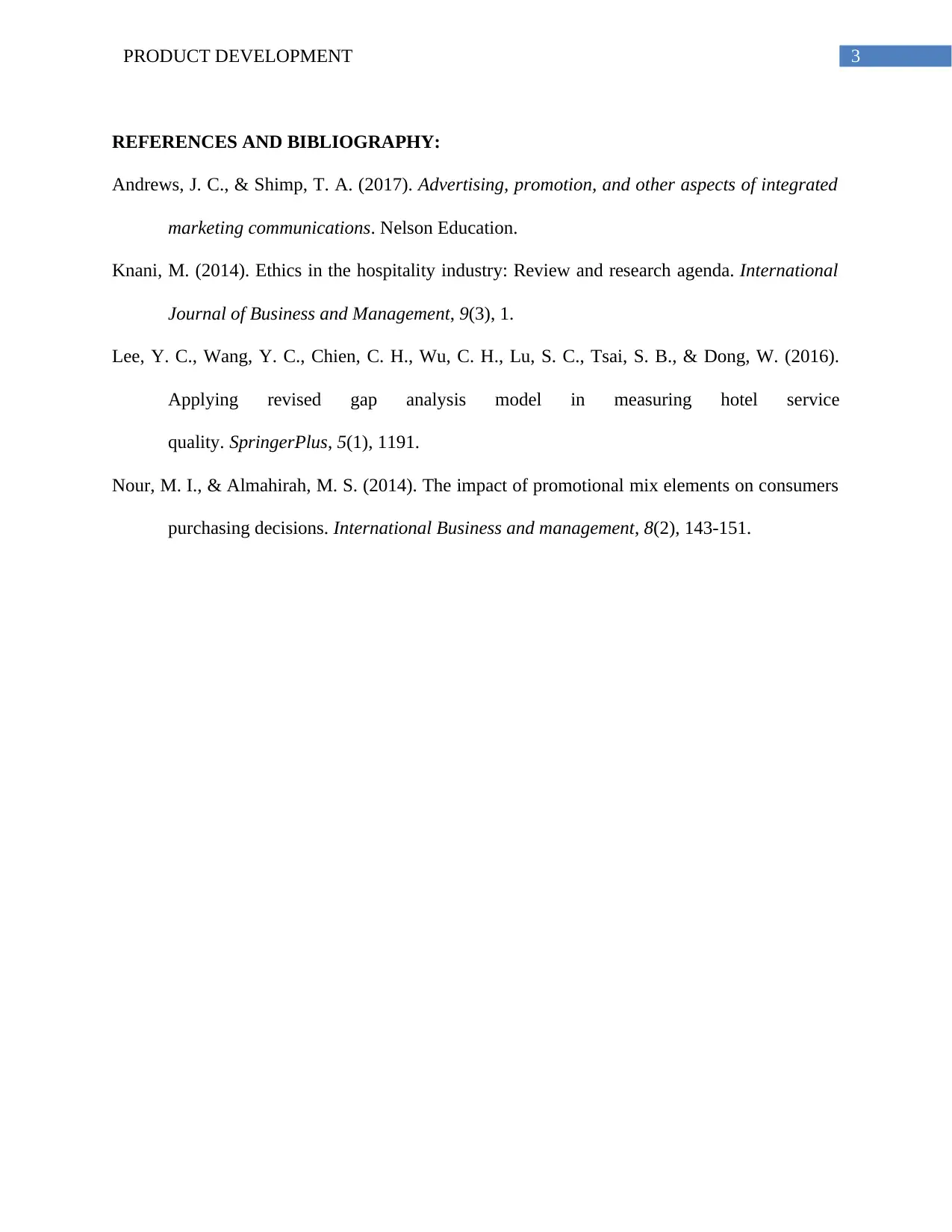Product Development Report: Marketing and Ethical Considerations
VerifiedAdded on 2023/05/28
|4
|765
|267
Report
AI Summary
This report provides a comprehensive analysis of product development, encompassing various critical aspects. It begins by examining the environmental factors that influence new product development, emphasizing the importance of raw materials, ergonomics, recyclability, and cultural considerations. The report then delves into the GAP model, using a food product (cereal) as an example to illustrate gaps in customer preferences, service perception, experience delivery, and expectation. Further, the report explores the functions of a distribution channel, highlighting its role in bridging the gap between production and consumption, product promotion, financial management, and stock holding. The design of a promotional mix is also discussed, considering factors such as market nature, product characteristics, customer location, marketing budget, and the product's life cycle. The advantages and disadvantages of television advertising are then presented, followed by a comparison of advertisement and sales promotion. Finally, the report addresses ethical issues in tourism and hospitality marketing, including leadership, loyalty, fairness, accountability, reputation, and trustworthiness, emphasizing the challenges marketers face in balancing business growth with ethical values. The report is supported by relevant references and a bibliography.
1 out of 4











![[object Object]](/_next/static/media/star-bottom.7253800d.svg)